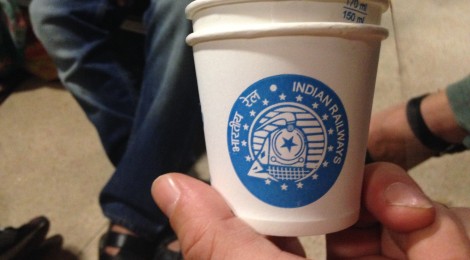
My Four Noble Thirsts
In the northern subcontinent, our travels have taken on a focus: be where the Buddha has been.
It wouldn’t be right to say we are pilgrims, but we have made a point to visit the four locations that Buddhist pilgrims visit when they travel to this region.
Siddhartha Gautama was a thoughtful person, and visiting his habitats—some he used before and others after he became the Buddha—makes a person thoughtful. These travels make me consider the time when I thought a great deal about enlightenment and how to achieve it, and these travels make me reconsider the very nature of the word: enlightenment.
Our visit to the Buddha’s haunts is haphazard: first to the place of preaching, then to the place of enlightenment, then to the place of his passing, and finally into Nepal, the place of Prince Gautama’s birth.
There are four noble truths in Buddhism, and I am torn about whether to capitalize the phrase, Four Noble Truths. At the core of these noble truths is dukkha, a word with various English translations related to unsatisfactoriness.
A primary cause of dukkha is taṇhā, whose literal translation is ‘thirst,’ and which is often associated with the English language idea of craving, or desire.
There is no denying the power of the places we visit, of the psychological impact of the people visiting them with us.
If I were better than I am, if I were really going to become enlightened in the way the Buddha conceived it, if I were to succeed at existing beyond the cosmic cycle, what thirsts would I have to quench?
Sarnath: Where Buddha First Preached
There are things only a blind traveler could miss at Sarnath. There’s the extraordinary beauty of the Dhamek Stupa and the surrounding gardens, the thin coatings of gold that adorn nearly every solid surface, and the blue signs all over the park that beg and beg: “Don’t stick golden foil on the monument.”
“Check! No gold foil!” I am always quick to promise things that are easy.
A little more slowly, it dawns on me what a significant request these signs are.
This holy place asks true believers to give up one of their greatest thirsts, to adore the Buddha.
The real question tumbles into my head: What great thirst I might quench?
My answer is before me. Next to me. Within me. Alison.
I would have to give up my thirst for Alison.
Bodhgaya: Where Buddha Attained Enlightenment
Hypnotic is one of the best words to describe the now of Bodhgaya.
Is there a rhythm to the ebb and flow of pilgrims and monks though the gate?
Linger; observe; consider.
What makes this tree so beautiful, so graceful?
Stare; muse upon Darwin; stare more.
What is that clear liquid the old woman is dipping fallen leaves into?
Sit; watch; wait for a leaf to fall so that, like the monks, you can carry it to her for dipping.
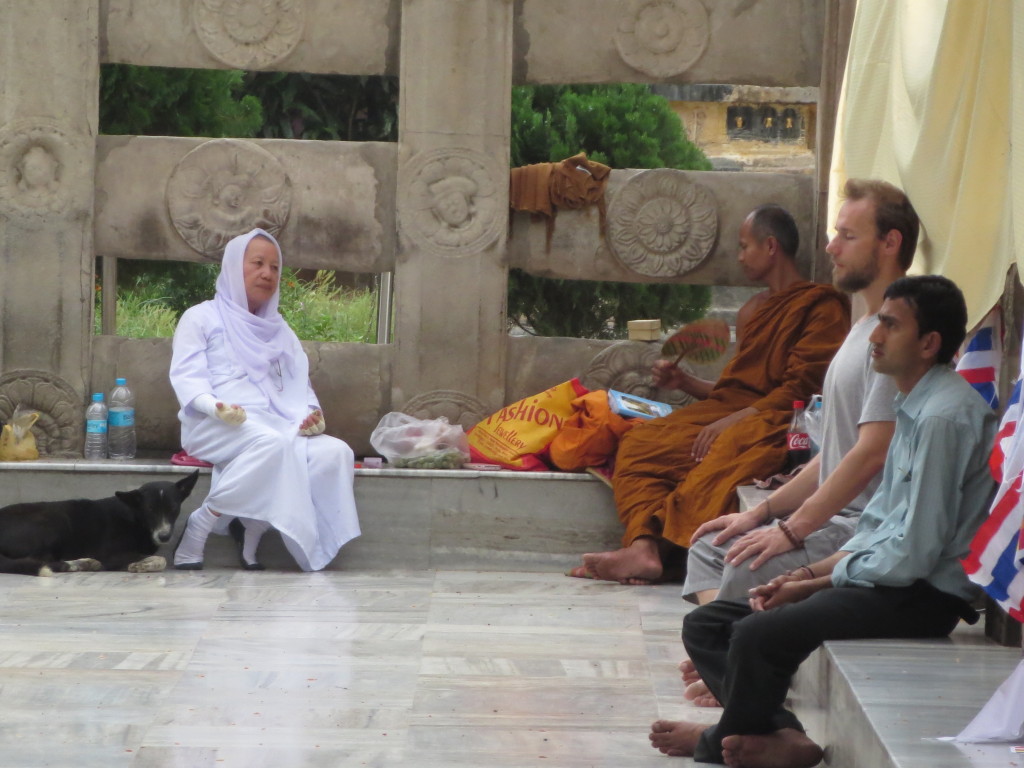
The old woman in white gathers leaves from the Bodi tree and dips them in a clear liquid. The monk also gathers the falling leaves and hands them over. Click the picture to enlarge.
My hypnosis is a river of questions: Why are things the way they are? Which moments and movements are causes? Which are affects?
These questions have been a lifetime of solace. And they must end if I were to step closer to the Buddha’s enlightenment.
I would have to give up my thirst to understand.
Kushinagar: Where the Buddha Died
Kushinagar is rural. No train tracks go there. To make the journey we cram into an aged local bus in Gorakhpur and hang on for sixty bumpy, wheat-and-pasture kilometers. It’s two more shoe-sole kilometers to Ramabhar Stupa, the pile of bricks where the body of the Buddha was put to flame.
Are Alison and I and the single guard the only humans present? I almost wish for a Bodhgaya-size crowd to help bear the sense of gravity that is palpable. We drift in the auspicious direction, clockwise, taking in the gentle curves of the place. It is the quietest place I have ever been in India.
Quiet like the ranch is quiet.
On southeast side of the monument a group of five local women are working: they irrigate, they cut the grass, they pull weeds. Hot work. Hard work. Work my mother would love.
For a few minutes I am wandering inside myself, wondering how this place is like the place I grew up. And when I come to the world again, the laboring women are gone. Surely they have only moved out of sight or are taking their lunch in the shade, but the gap in the scene tears at my heart. And then I know:
I must give up my thirst for my mother to live on.
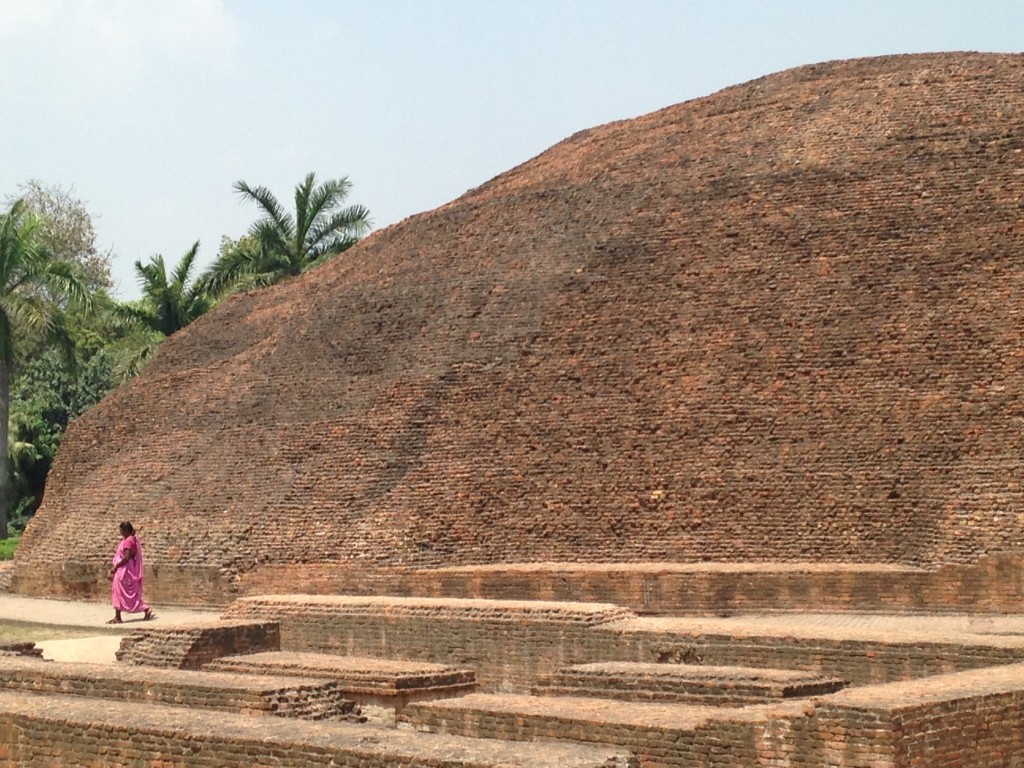
One of the laborers makes her way across the front of Ramabhar Stupa. Soon she will disappear from the fame. My mother, too, will soon disappear from her frame. Click the picture to enlarge.
Lumbini: Where the Buddha Was Born
Just a day after arriving Nepal, Alison falls ill. She is not gravely ill, nor should she venture into sticky heat of the Lumbini afternoon. Nor, she vehemently assures me, should I haunt the hotel room, attempting the role of nursemaid.
So I take a long walk. From the peaceful shade of Maya Devi Temple to the blinding white of the World Peace Pagoda is about four kilometers one-way. Between are the dozen or so temples built by countries like Thailand, Japan, and Taiwan to honor the start of Siddhartha Gautama’s life.
Nepal has also built a temple to honor the Buddha, but because Nepal is poor, the temple is shabby. And because it was early in the construction plan, it is nearly hidden in trees. So I am completely ambushed by a pack of young Nepali monks.
Is the youngest six? He might be five. Is the oldest twelve? They are delighted I am an English speaker, and clearly they have a skilled teacher in that subject.
Where am I from? What is my profession? (Yes, they use the word ‘profession.’) When did I come to Nepal? To Lumbini? Then the conversation takes an unexpected turn.
Do I have any brothers? Older or younger? Do I have any sisters? Older or younger? I am not fast on the uptake.
Do I have parents? “My mother is still alive. My father is d—“
They are orphans. All of them. “My father is dead.”
They crowd near when I ask for a picture. The oldest volunteers to pilot my iPhone. Closer and closer they crowd. It feels as if I am the one they have been waiting for.
And then I know one of the greatest and saddest truths.
I must give up my thirst to be a parent.
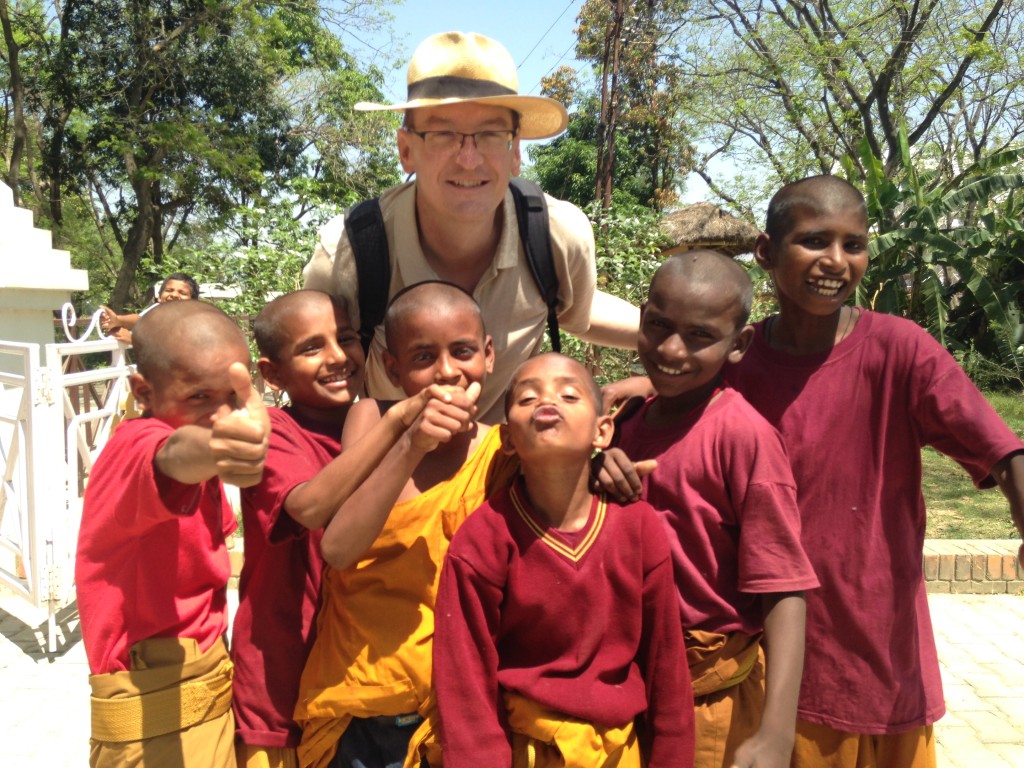
The orphan monk club of Nepal. The photographer and I put in some serious effort just to squeeze them into the frame. Click the picture to enlarge.
Ever in a desert of my own making,
Chris
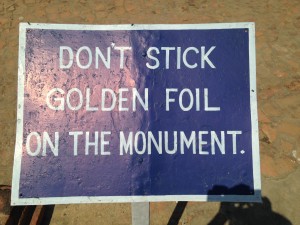

I am with you.
I love your writing…if I close my eyes, I am there, too. Thanks for giving me that present. ☺️